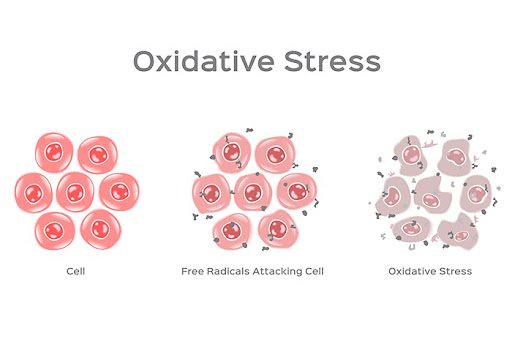The human brain, with its voracious appetite for oxygen, is exceptionally vulnerable to oxidative stress due to its modest antioxidant defenses and lipid-rich composition. Recent studies have unveiled a compelling connection between oxidative stress and anxiety disorders, shedding light on the intricate role of neurotransmitters like GABA and serotonin in anxiety regulation.
One notable revelation is the impact of oxidative stress on the GABA and serotonin systems, both critical for emotional equilibrium. While Diazepam, a well-known anxiolytic, partially alleviates oxidative stress-related anxiety, the spotlight is shifting towards antioxidants as potential anxiety mitigators. Dietary polyphenols found in cocoa powder, dark chocolate, berries, nuts, vegetables, and soy have emerged as promising candidates, offering both anxiolytic and antioxidant effects.
Anxiety disorders, often seen in tandem with chronic medical conditions like hypertension and type-2 diabetes, have sparked interest in the role of oxidative stress as a contributing factor. Studies have demonstrated that induced oxidative stress in rats results in elevated anxiety, hypertension, and insulin resistance. Intriguingly, hypertensive individuals and animals exhibit reduced antioxidant capacity, fostering excessive reactive oxygen species production, and subsequently, high oxidative stress levels. This complex interplay between oxidative stress and comorbid conditions underscores the need for a deeper understanding.
Exploring the molecular pathways involved in oxidative stress has uncovered the pivotal role of Brain-Derived Neurotrophic Factor (BDNF). This brain-secreted protein plays a dual role in oxidative stress response, acting as an antioxidant guardian during acute oxidative stress by safeguarding neurons against cytotoxicity. However, under sub-chronic oxidative stress, reduced BDNF expression exacerbates oxidative stress and inflammation, creating a toxic environment conducive to high anxiety states.
Oxidative stress’s detrimental impact on the hippocampus, a brain region critical for fear and emotional learning, is evident. Studies suggest that age-related oxidative damage may contribute to increased pain sensitivity and emotional disturbances. Oxidative stress wreaks havoc on cell structures, inactivating receptors, enzymes, and ion channels, leading to alterations in neurotransmitter systems and brain activity. These changes manifest as cognitive and behavioral variations seen in psychiatric disorders.
Post-mortem investigations have unveiled oxidative damage in limbic structures linked to anxiety modulation. Patients with panic disorders and obsessive-compulsive disorders (OCD) exhibit elevated levels of oxidized compounds in their peripheral blood, red blood cells, urine, and cerebrospinal fluid, indicative of oxidative stress presence.
In essence, the intricate relationship between oxidative stress and anxiety disorders is becoming increasingly apparent. While further research is needed to fully unravel this connection, it offers new avenues for potential treatments and preventative measures, holding promise for individuals grappling with anxiety-related challenges.
References:
Bouayed, J., Rammal, H., & Soulimani, R. (2009). Oxidative stress and anxiety: relationship and cellular pathways. Oxid Med Cell Longev, 2(2), 63-67. doi:10.4161/oxim.2.2.7944
Fedoce, A. D. G., Ferreira, F., Bota, R. G., Bonet-Costa, V., Sun, P. Y., & Davies, K. J. A. (2018). The role of oxidative stress in anxiety disorder: cause or consequence? Free Radic Res, 52(7), 737-750. doi:10.1080/10715762.2018.1475733
Hassan, W., Barroso Silva, C. E., Mohammadzai, I.U., Texeira Da Rocha, J.B., & Landeira-Fernandez, J. (2014). Association of oxidative stress to the genesis of anxiety: Implications for possible therapeutic interventions. Current Neuropharmacology, 12 , 120-139.\
Salim, S., Asghar, M., Taneja, M., Hovatta, I., Chugh, G., Vollert, C., & Vu, A. (2011). Potential contribution of oxidative stress and inflammation to anxiety and hypertension. Brain Res, 1404, 63-71. doi:10.1016/j.brainres.2011.06.024
Salim, S., Asghar, M., Chugh, G., Taneja, M., Xia, Z., & Saha, K. (2010). Oxidative stress: a potential recipe for anxiety, hypertension and insulin resistance. Brain Res, 1359, 178-185. doi:10.1016/j.brainres.2010.08.093

